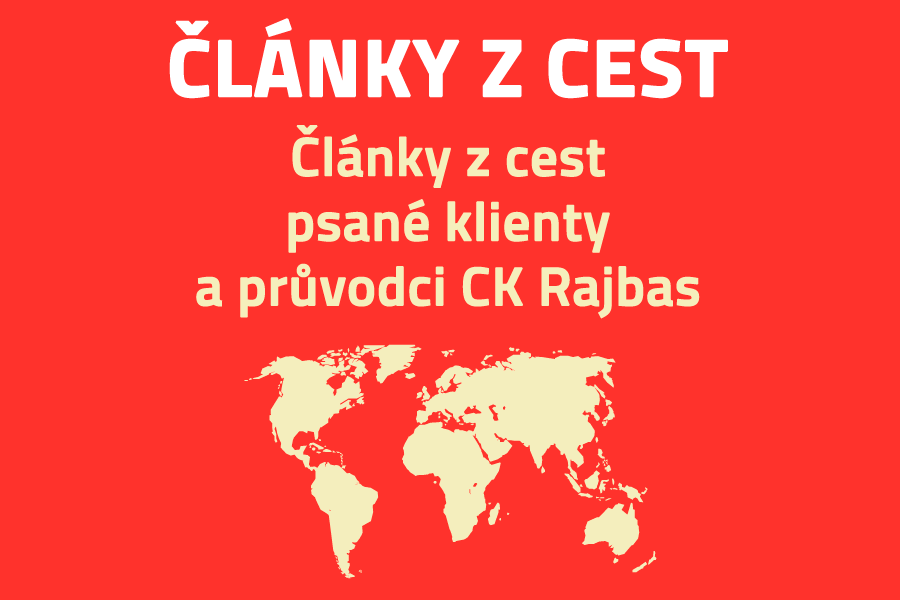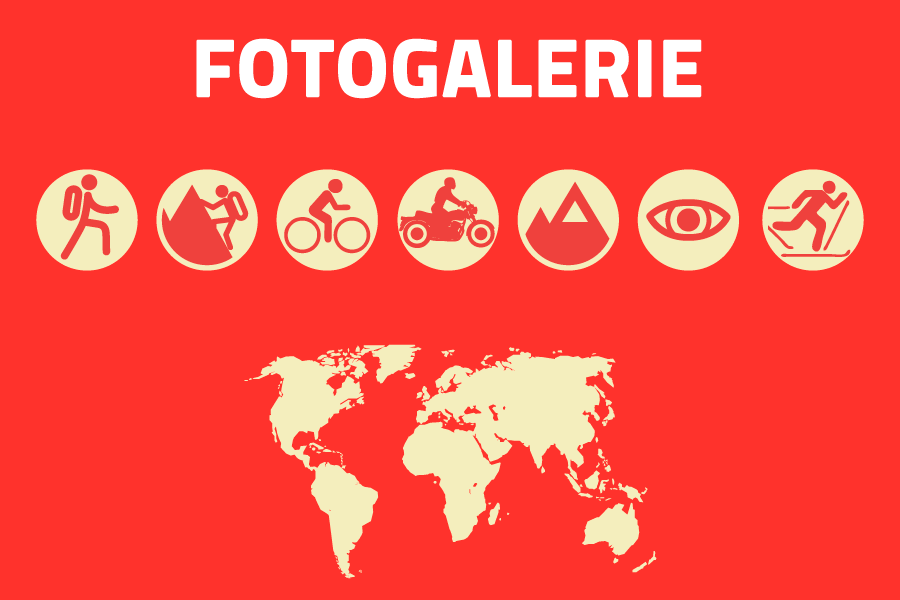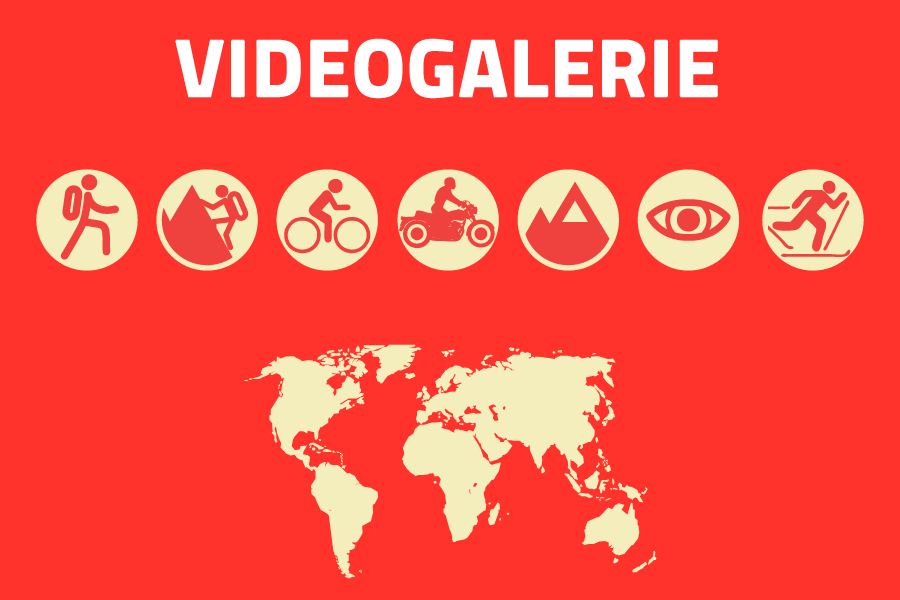Here we are! Meeting new friends at Dilli airport! I can´t wait for the adventure in which we are headed. The challenge is remarkable: exploring the beauty of Nepal from the legendary Enfield motorcycle.
A few years ago we set out for North India to experience the local culture and the highest rideable saddles of the world (up to 17.000 feet)! I was so enchanted by that journey, I promised myself that I would continue with such adventures. I chose to visit Nepal next as it met all of the requirements: inexpensive, exotic culture, peaceful people and diverse nature from tropics to mountains above 24.000ft… – simply wonderful!
Much criteria must be met in order to have a successful expedition such as this. There must be a team of people willing to travel around the area, who all have time, money and the skill to be flexible and friendly with each other. So far everything is going well. Our group consists of five men and one woman, thanks to Rajbas travel agency that has years of experience with expeditions in India using Royal Enfield motorcycles. Riding a night train has saved us the first 200 miles from Dilli to Nepal border. This is a dull part and it would be a waste of time.
At 5am we get off in Rudrapur and we are welcomed by Anel, a reliable Indian mechanic and the most important member of our crew. He has 7 Royal Enfield 500cc motorbikes ready for us. The concept of these four-stroke engine machines hasn´t changed since 1949 when their production started in England. Later transfered to India it has been continued with minor modifications up to this day.
The first 40 miles ot the way to Nepal border are important in order to get used to the machine (foot-brake on the left, shift on the right) and the specifics of Indian traffic. We keep left, as priority is given to the stronger one or the sacred cows. Typically, anyone is allowed to do anything, but it is apparent that a general courtesy is expected from us. We are supposed to blow the horn everytime something larger is near, and every truck has a large sign on the back to serve as a reminder.
On the Indian side there no cameras are allowed. However, the Nepalese have no problem with it. They willingly offer to exchange our dollars. After disappearing for half an hour they come back with the sum, probably collected from all of their neighbours. They were not able to exchange everything but we are thankful for their help. There is no sign of an exchange office anywhere. nepal_enfield_06-nahled Our first destination in Nepal is the nature preserve called Sukla Phanta. We make our first rudimentary mistake. We follow the advice of the first person we ask for directions without verifying it with at least two more natives. Ask a Nepalese: ″Excuse me, does this road go to…?″ In order not to disappoint you, he will answer ″YES″ every time even if he doesn´t understand a word. For this reason we do not find the entrance to the preserve tonight. But we learn that we should definitely not ride in the night next time. Pedestrians, cows, sheep, buffalo, motorcyclists and cyclists on the unlit roads are too big of a risk.
On Monday morning, after a few deviations, we finally find the entrance into Sukla Phanta reserve. The area of 400km2 is a paradise for many animals. The largest population of swamp deer live here, but there are other dwellers as well: rhino, elephant, indian tiger… We have a guide named Rajen but despite his help it takes one hour to get the permission to enter and the tickets. We are surprised that we are allowed to ride our bikes in the preserve, but soon we understand why.
The whole area is guarded by an army of about 1000 men, to keep the poachers away. The guards have several surveillance standpoints and their presence is apparent here on an everyday basis. We admire the calm surface of Rani Tal Lake (The lake of Queen Rani). Surrounded by a wild virgin forest, the lake itself is a place where the time has stopped. Ancient trees bend over the silent water. The deer run about on the banks and hyacinth grow from the dense water. Even a crocodile peeps out every now and then. We visit the observation towers at the water sources where the animals come to drink. Our guide draws our attention to fresh tiger footprints. Part of the preserve is more like a savanna, and this is not the best season for observing animals. The grass grows up to a few meters high here. The altitude of the park is 250m which makes the place very hot even in autumn, so I ride my Enfield wearing my shorts. What a mistake! Making our way through very dense vegetation which completely blocks the trail in some parts, my knees are badly cut by sharp grass blades. During one of our stops to rest and take delight in the surroundings, we can hear branches braking loudly meters away. Our guide instantly is alerted that it may be an elephants and asks us to return. We keep in mind his advice: ″If an elephant attacks, turn back and run! ″ We carefully continue, pass over a few water streams with broken down bridges, and appreciate the light weight of our 160kg motorbikes as we push them out of mud. Early evening we cross a 1,6km long cable bridge where 2 bikes can fit perfectly side-by-side. Visiting an elephant farm and taking a few pictures, we quickly try to find a hotel before it gets dark.
The next day Rajen wants to show us another elephant farm and takes us to the other side of the preserve, into the hills. The elephants are busy working in the bush and they are supposed to appear in a few hours. So we go to experience what the lifestyle is like in the villages of Tharu tribes. It´s time to harvest rice and the buffalo are bathing. Life flows quietly here – nobody worries about anything. The houses are made of mud and stone and banana trees grow at each of them. People living in these fertile lowlands never worry about warm cloathing and winter heating.
However, there are troubles. From time to time their fields are ravaged by elefants visiting here from the preserve. 10m high watchtowers have been built in order to spot and chase away elephants that would potentially destroy the crops. Every year several villagers die of elephant attacks as well. Rajen arranges a show of local garb and two beautiful women joyfully show us their exotic clothing (while being loudly supported by their families.) We are told that we are the first tourists in their village and they hope we will have good memories of our visit. We will – indeed! Everything is taking longer than planned, and the elephants are gone again. We make a decision to continue east.
The next destination is Bardia national park. It is easy to reach on a well-maintainded road leading east-west through the Nepalese lowlands. We can speed up to 70km/h! Such a good road with so little traffic is quite rare in India. On Wednesday morning we enter the park to face another challenge. The road is made more interesting by crossing a shallow ford of about 20m width. After another 15km we reach the centre of the park – the Thakurdwara village. Breakfast is in one hour and during that time we are bombarded with deal-makers from the local hotels. Again, we are the only tourists and they try their best.
We can´t miss the opportunity to experience the wilderness from the back of an elephant and possibly meet other elephants or even tigers! This is a very commercial idea but we decide we can support the national park and its inhabitants. We pay 1000 rupees an hour for 1 elephant + the 500 rupee entrance fee into the park. We arrange this trip for Friday as the schedule for tomorrow is full. We want to experience one day in the wilderness on raft in one of the branches of Karnali river. We ride 45km up to an impressive bridge behind which is the start of our water adventure. Our guides aren´t very familiar with the raft, and luckily the water is not wild. After some time we enter the branches of the river where elephants, tigers and rhinos come to drink. But we lack some good luck as there are no animals in sight. We see footprints everywhere but no crocodiles or gavians, only palmipeds. Our rafting ends at an elephant farm with cub elephants. One of them, a five month-old baby of 200kg jogs our 50kg Marcela – the only woman of our crew – and she flies off 2m into the nearby branches! It might have been just from joy of life or worries about its food. Next morning we sit on the back of an elephant making it throught the trees along the river. The next morning dew is everywhere, haze is rising from the undergrowth and my attention is being drawn by the other elephant guide who sees a rhino standing in the river, sniffing and then running away into a thick bush. We continue and soon we meet a rhino couple. Suddenly yet another big boy appears 20m away from us. We can see that both the elephant guide and the elephant are frightened by this surprising encounter. The huge animal turns back and runs away into the jungle with heavy stomping. The rest of our journey passes quietly with no more extreme experiences.
Yesterday Peter met a professional photographer who told him about an excellent route for motorbikes – difficult but with great views. nepal_enfield_03-nahled Our goal is Jumla, 240km off the asphalt road to the foothills of Himalaya. From there it´s a two-day-walk to Rara national park. Black himalaya bear, goat antelope and the rare red panda live there. With courage we head toward our new goal. The drive is more difficult and much slower than we expected. After 4 hours, we have traveled some 30km on a dusty trail full of stones and pot-holes. I can feel my engine losing power and last few kilometers are torture. At a bridge at Dugeswar village, Anel looks at the engine using a headlight and diagnoses the problem. There is a valve seat cracked and it cannot be ridden. In the morning I shamefully load my motorcycle onto a random tractor passing by and return to Sukhet. Anel and the rest of the crew carry the engine head as they ride their Enfields ahead. He assures me that it will be fixed I have no clue how. As we enter Sukhet in the late afternoon, I find that my bike is ready to ride! A local mivvy was able to make a new valve seat on a prehistoric lathe, shape it with a cutter, and Anel refaced it. We´ll never understand how he calculated the exact overlap using only a snap gauge! The only thing that matters now is that my motorbike is running. We run out of time and decide not to go to Jumla. nepal_enfield_17-nahled Now we head for Lumbini – the birthplace of Buddha and thus the most sacred place for all Buddhists. It means we must cross 340km through the fertile lowlands up to the Indian boarder. We make it almost in one day, dashing through picturesque villages with rice harvest on the way, fields of oilcake in blossom, banana-trees at every house and kids playing happily. People here are poor and live quietly.
Lumbini itself is a megalomaniac project. Buddhist organizations from all over the world are represented and countries like Korea, China and Australia already have temples here. Other projects are under way and the future here is certainly going to be amazing. However we feel it is a bit like a Buddhadisneyland. The most important place here is The Holy Grove where in 543 b.c. prince Siddharta Gautama (later known as Buddha – awaken) was born. For 29 year he lived in the luxury of the palace, protected from the troubles of the world. During his old age, illness and death, he rejected his comfortable life and started meditations and renunciation for 5 years. But still he hadn´t found the truth of life. The illumination and thus liberation from the circle of life came after 49 days of meditation under The Bodhi Tree. Then he delivered his first discourse that put in motion the wheel of life (dharma,) that is the basic principle of Buddhist philosophy.
From Lumbini we head north to Pokhara and stay overnight in the town of Tansen. In clear weather, from here you should be able to see the Himalayas and its peaks over 8000m. We are unlucky and the poor visibility definitely does not allow us the 100km views. But later, in the jungle, we come across the ruins of a palace at the bank of the Kali Gandaki river. At the end of 19th century a certain prime minister built it before having been sent to exile for an attempt at the palace-coup. The complex is said to be accessible by motorbikes and this is a clear challenge for us.
We ride along the fields but then must stop 1,5km before our destination as the ford is impassable. nepal_enfield_15-nahled The Rani Ghat are impressive and we enjoy the fantastic and frightening scene of the ghostlike palace in the middle of the rainforest, plus the wonderful hospitality of local people. On our return we appreciate our Royal Enfields high torque at low speed. We climb 800m uphill for 1Okm without problems. This is one of our best experiences in Nepal. We also have an opportunity to enjoy one of the many Nepalese holidays called Tihar. The children especially take it very seriously. They stop vehicles on the roads and demand small financial gifts in exchange for singing and dancing. During the next three days we become annoyed by being continuously stopped by the kids. Sometimes in a very unscrupulous way – like rope across the road. If we don´t give any gifts we sometimes get a few old oranges thrown at our backs. In Pokhara we admire the creative traditional Nepalese dancers of all ages, from 4 years to adults. Some wear colourfully decorated traditional garbs, while others dance wearing ordinary clothes. Everybody is comfortable and happy, and people of all ages rejoyce spontaneously without alcohol. Something like this is very rare to see in our homeland.
Pokhara is the second largest city in Nepal and the starting point for many trackers who are keen on admiring the beauty of the 8000m peaks. Two parts of Pokhara are driven by tourism. Any kind of tracking and mountaineering equipment is available here for extremely low prices. The goods are a perfect copy of the world´s prestigious outdoor gear. The quality is a matter of discussion. But if you do not expect, for example, a goretex jacket to be waterproof (goretex is going to lose this ability with time anyway), the ratio between price, quality, utility value and design is very favorable. The shops are full of hand-made gifts, Buddhist relics, quality maps, Panoramic photos and tourist guide books from all over the world.
The trackers recovering here after their long trips take advantage of western cuisines. Here, the connection to the outer world is easy thanks to many internet cafes and public phone centres. Watching the astonishing panorama of the Himalaya range in the north, beautifuly illuminated by the rising sun, became a ceremony for every tourist. nepal_enfield_35-nahled We do the same and get up early so as not to miss the amazing performance. We take impressive pictures of our bikes with the peaks of Annapurnas, Dhaulagiri and Makcapuche in the background. Unfortunately our return is complicated by an accident. Petr has a problem with pulled knee ligaments in spite of having worn a knee brace.
We change our plan for the next two days. We decide to go rafting with one of the many local travel agencies for two days. Marsyandi River has several affluents fed by the glaciers of Manaslu and Annapurnas. We take the Seti Khola rapids and it is the first great experience with rafting for many of us. After drying and warming ourselves up we set out on more adventures. We ride up a spectacular zig-zag road for 70km to a town called Bandipur town. The best days of this place are gone since malaria had wiped out the fertile lowlands. The neo-classic front walls of the local houses are strange, and this town looks like it does not belong to Nepal. The most prosperous period was under the Rana dynasty. In those days Bandipur was an important emporium between India and Nepal. The next day a few of us set off to look for Siddha Gupha cave that was discovered in 1987. A path along a mandarin orchard descends rapidly and plunges into the mist of a subtropical rainforest with monkeys and many birds. After a few detours we finally find the entrance. This 400m long cave does not disappoint our expectations.
Beautiful stalactites and stalagmites, bats, ladders and narrow clefts are an exciting experience. The other half of our crew, who prefer biking to walking, don´t participate in this cave exploration. They look for interesting trails to drive their Enfields and later carry kids on their bikes. nepal_enfield_38-nahled In the afternoon we travel another 40km to the ancestral residency of the Gorkhy family who were very important in Nepalese history. On the hill above the marketplace, a complex of Hinduist palaces called Gorkha Durbar have been built. The palaces are meant to glorify the Gorkhy kings and Shah dynasty, and is admired as a jewel of art of architecture. It is no surprise that we spend two days here in order to explore these unique sights and do some tactical driving to Arunghatu (six weeks ago I set off from there on a track around Manaslu). We are slowed down by the leaking tank of Peter´s Enfield and the rough terrain. The great pleasure of a hard-core terrain drive is ocassionaly ruined by a large bus passing by. We don´t reach our destination and return to our Arit Lodge after dusk with our engines covered in mud and dust. We spend the evening talking to a pleasant owner of the hotel about the Communist Party of Nepal – the Maoists. In 1996 they started a so called “people´s war” and since then 3000 human lives have been lost. Gorkha is one of the Maoist centres and the entrance gate of the town bears its well-known symbols, the hammer and sickle. When leaving we meet a group of young people proudly waving red flags with the same symbols. They might mean well, but we know they are on the wrong side.
Our journey draws to a close. We do not reach our planned destination, the border of Tibet and Kathmandu, but we have visited many places beyond our plan. Some of them were the best experiences of the entire tour. The 300km to Gorakhpur are the last of our 2000km long journey. From there we go to Dilli by train, with our bikes in tow. Nepal was an amazing experience for me and since then I have been thinking about another trip further east up to Sikkim or north to Tibet. The question now is, when and with whom?
The article is concerning journey Nepál - podhůří a NP na motocyklech of outdoor travel agency CK Rajbas – Outdoor Travel – www.rajbas.eu


















